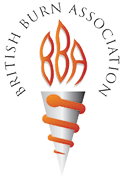(for example: stop, drop and roll); remove the burning source.
- Remove all burnt/burning clothing (unless stuck to the patient), jewellery (bring bagged clothing to hospital for examination)
- Chemicals – need longer period of irrigation and specific information about the chemical concerned should be obtained.
3. Cool the burn wound
- Ambulance control despatch system will advise the 999 caller to cool the burn area for up to 10 minutes
- If this has been done, Pre-hospital carers should cool for another 10 minutes during package and transfer
- Water should not be ice cold o If the burn area is small
(< 5%)then a cold wet towel can be placed on the burn area, on top of the clingfilm dressing but before wrapping up the whole patient to maintain body warmth beneath the blankets.
- Be aware of the risk of hypothermia, especially in children and the elderly
- Cool the burn wound but warm the patient
References
- Nguyen NL, Gun RT, Sparnon AL, Ryan P. The importance of immediate cooling—a case series of childhood burns in Vietnam. Burns 2002; 28:173-6.
- Nguyen NL, Gun RT, Sparnon AL, Ryan P. The importance of initial management: a case series of childhood burns in Vietnam. Burns 2002; 28:167-72.
- Allison K. The UK pre-hospital management of burn patients: current practice and the need for a standard approach. Burns 2002;28:135-42.
- Jandera V, Hudson DA, de Wet PM, Innes PM, Rode H. Cooling the burn wound: evaluation of different modalites. Burns 2000;26:265-70.
- Sawada Y, Urushidate S, Yotsuyanagi T, Ishita K. Is prolonged and excessive cooling of a scalded wound effective? Burns 1997;23:55-8.
- Lawrence JC. First-aid measures for the treatment of burns and scalds. J.Wound.Care 1996;5:319-22.
- Hodson AH. Treating burns by initial cooling. J R.Soc.Med 1992;85:121.
- Latarjet J. [Immediate cooling with water: emergency treatment of burns]. Pediatrie.(Bucur.) 1990;45:237-9.
- Lawrence JC. British Burn Association recommended first aid for burns and scalds. Burns Incl.Therm.Inj. 1987;13:153.
- Clayton MC,.Solem LD. No ice, no butter. Advice on management of burns for primary care physicians. Postgrad.Med. 1995;97:151-60, 165.
- Demling RH, Mazess RB, Wolberg W. The effect of immediate and delayed cold immersion on burn edema formation and resorption. J.Trauma 1979;19:56-60.
- Kravitz H. Letter: Cooling as first aid for burns. Pediatrics 1974;53:766.
- Kravitz H. First-aid therapy for burns—cool it: need to instruct laymen. Clin.Pediatr.(Phila) 1970;9:695-7.
- Australian and New Zealand Burn Association. Emergency Management of Severe Burns Course Manual. 1996.
- First Aid Manual, the authorised manual of St John Ambulance, St Andrew’s Ambulance Association and the British Red Cross. London: Dorling Kindersley, 1997.
- Judkins K.C. Thermal Injury. In Greaves I, Porter K, eds. Pre-Hospital Medicine The Principles and Practice of Immediate Care, pp 375-87. London: Arnold, 1999.
- Burns. In Greaves I HTPK, ed. Emergency Care A Textbook for Paramedics, pp 270-8. WB Saunders, 1997.
- Raine TJ, Heggers JP, Robson MC, London MD, Johns L. Cooling the burn wound to maintain microcirculation. J Trauma 1981;21:394-7.
- Jelenko C, III, Jennings WD, Jr., O’Kelley WR, III, Byrd HC. Threshold burning effects on distant microcirculation: Presence of a passively transferrable, nondialyzable arteriolar constrictor substance in blood of burned patients. Am.Surg. 1974;40:388-91.
- Jelenko C, III, Jennings WD, Jr., O’Kelley WR, III, Byrd HC. Threshold burning effects on distant microcirculation. II. The relationship of area burnt to microvascular size. Arch.Surg. 1973;106:317-9.
- Jelenko C, III, Jennings WD, Jr., O’Kelley WR, III, Byrd HC. Threshold burning effects on distant microcirculation. I. Preliminary observations. Arch.Surg. 1971;102 :617-25.
- King T.C,.Price P.B. Surface Cooling Following Extensive Burns. JAMA 1963;183:677.
- Ofeigsson O.J. Water Cooling: first aid treatment of of scalds and burns. Surgery 1965;57:391.
- Cooke M.W, Morrell R, Wilson S, Bridge P, Edwards S, Allan T.F et al. Does criteria based dispatch of 999 calls adequately detect the critically ill and injured? Pre-hospital Immediate Care 1999;3:191-5.
- Childs C. Temperature regulation in burned patients. Journal of Intensive Care 1994;131-4.

